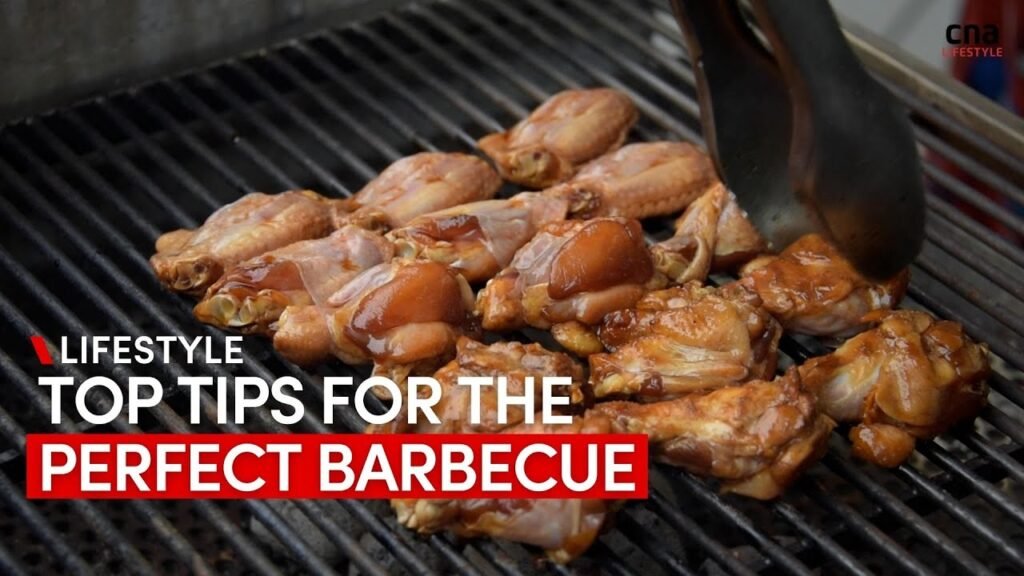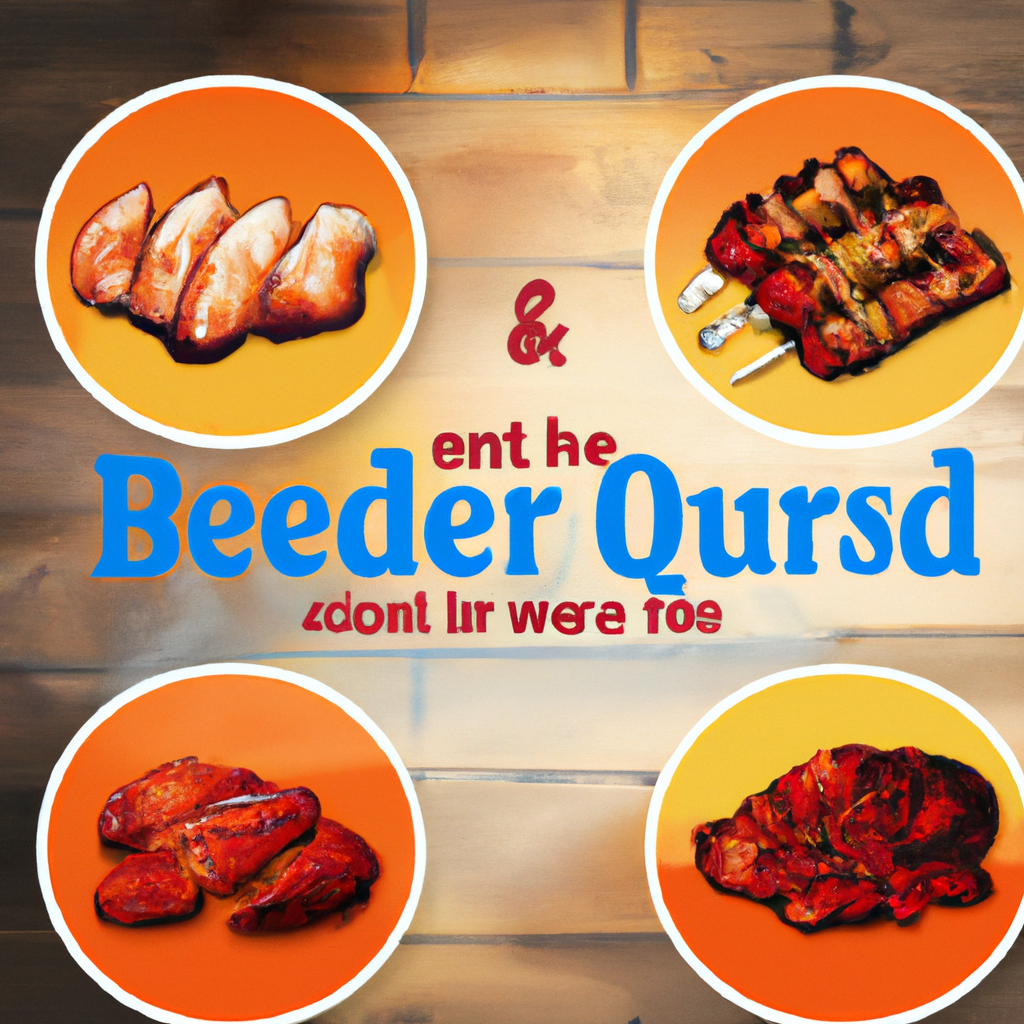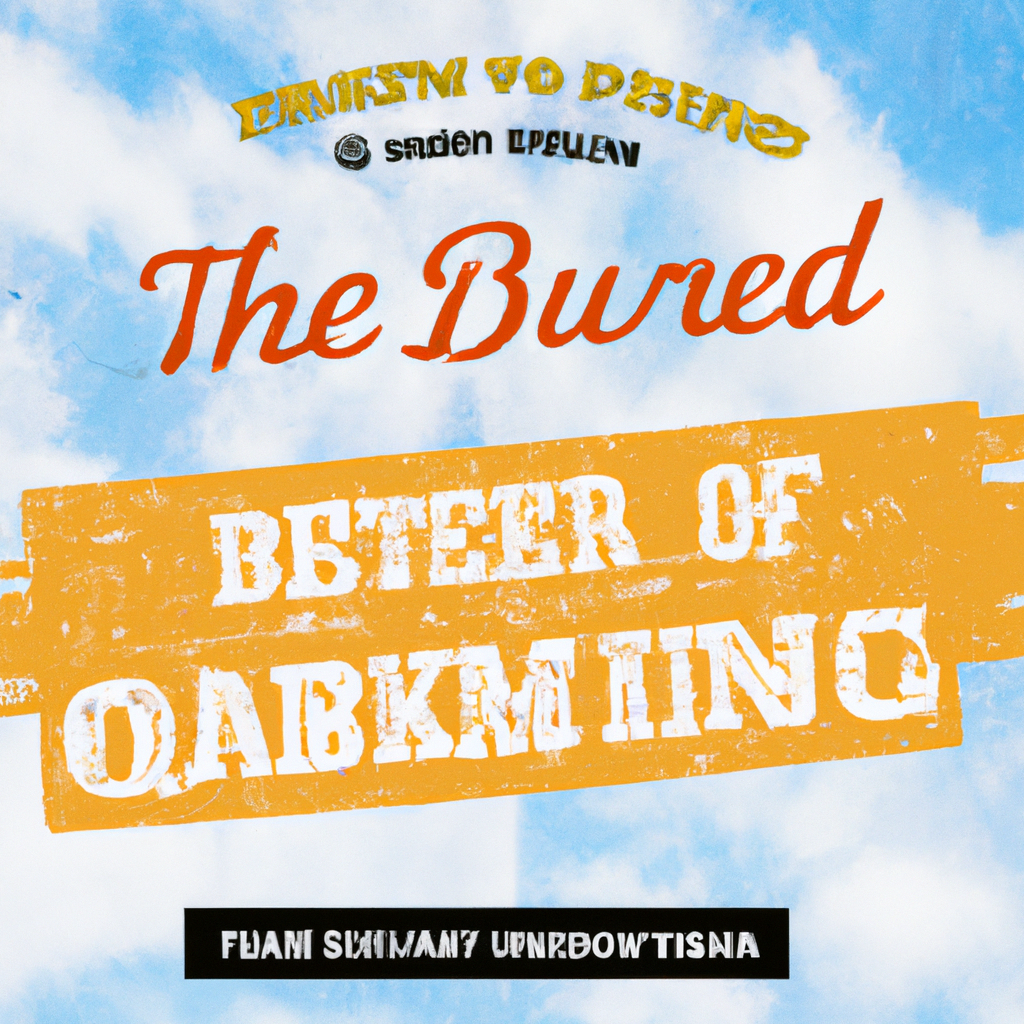Are you planning an outdoor barbecue with friends and family? Well, we’ve got you covered with some cooking tips from Chef Desmond Tan, a grill master from Fyregrill BBQ Store and Academy. In this video, Chef Desmond shares his expertise on how to achieve the perfect char, which charcoal to use, and when to know if your steak and chicken wings are done. Whether you’re a seasoned griller or a beginner looking to up your BBQ game, these tips will surely help you have an amazing outdoor cooking experience.
During the video, Chef Desmond explains the difference between regular mangrove charcoal and compressed charcoal, emphasizing the importance of cooking over embers rather than direct fire. He also demonstrates how to light charcoal using a simple chimney starter and shares his advice on cooking thicker cuts of meat and vegetables. Additionally, he highlights the significance of oiling the food rather than the barbecue itself to prevent excessive oil from dripping into the charcoal and causing flare-ups. With Chef Desmond’s guidance, your outdoor barbecue is bound to be a success!

This image is property of i.ytimg.com.
Choosing the Right Charcoal
Regular Mangrove Charcoal
Regular mangrove charcoal is a popular choice for outdoor barbecues. It produces a very high heat, perfect for searing meats and achieving that charred flavor. However, it tends to die down quickly, which means it may not cook the food evenly throughout. This type of charcoal is ideal for open barbecue pits where you want the direct fire to quickly cook the outside of the food.
Solid Raquette Charcoal
On the other hand, solid raquette charcoal is a compressed charcoal that provides a high and even heat. It burns at a slower pace compared to regular mangrove charcoal, allowing the food to cook more evenly. This type of charcoal is preferable when you want to cook over embers rather than direct fire. It provides a more controlled and consistent heat, making it suitable for grilling thicker cuts of meat.
When choosing between regular mangrove charcoal and solid raquette charcoal, consider the type of cooking method you’ll be using and the desired outcome for your barbecue. If you prefer quick searing and don’t mind the uneven cooking, regular mangrove charcoal is a good option. However, if you want more control and even cooking, solid raquette charcoal is the way to go.
Using a Chimney Starter vs Traditional Method
Using a Chimney Starter
A chimney starter is a simple and effective tool for lighting charcoal. It consists of a metal cylinder with holes at the bottom and a handle on the side. To use a chimney starter, simply pour the charcoal into the cylinder and place a couple of fire starters below it. Light the fire starters, and the heat will rise through the chimney, igniting the charcoal.
Using a chimney starter has several advantages. Firstly, it ensures that the charcoal is evenly and fully lit, resulting in a consistent burn. This means you won’t have to deal with any unlit or partially lit charcoal pieces that can affect the cooking process. Secondly, it eliminates the need for lighter fluid, which can leave a chemical taste on the food. Lastly, using a chimney starter is quick and easy, saving you time and effort.
Traditional Method
If you don’t have a chimney starter, you can still light the charcoal using the traditional method. Stack up the charcoal in a pyramid shape and place a couple of fire starters below it. Once the fire starters are lit, the heat will gradually spread to the charcoal, causing it to ignite.
While the traditional method is a viable option, it has some drawbacks. It can be messy and time-consuming, as you need to stack the charcoal carefully and ensure that the fire starters ignite evenly. Additionally, the charcoal may not ignite as uniformly as it would with a chimney starter, leading to uneven heat distribution.
Ultimately, using a chimney starter is the recommended method for lighting charcoal efficiently and effectively.
Determining When the Charcoal is Ready
Waiting for 70-80% Ash Over
To ensure that the charcoal is ready for cooking, it is important to wait until it reaches a certain level of ash coverage. With a chimney starter, you’ll want to wait until the charcoal has about 70-80% ash coverage. This indicates that the charcoal is fully lit and ready to provide even heat for your barbecue.
Pyramid Style Method
If you’re using the traditional method of stacking the charcoal in a pyramid shape, you can use the same guideline of waiting for the charcoal to be 70-80% ashed over. This ensures that the charcoal has sufficient time to ignite and reach the desired heat level for cooking.
Waiting for the charcoal to reach the appropriate ash coverage ensures that it has reached its peak heating potential. This will result in more consistent and even cooking throughout your barbecue.
Cooking Thick Cuts of Meat and Vegetables
Benefits of Cooking Thick Cuts
When it comes to grilling meats and vegetables, cooking thicker cuts has several advantages. Firstly, thicker cuts allow for a more uniform cooking experience. With thinner cuts, there is a higher chance of overcooking or undercooking certain parts of the food. Thicker cuts provide a larger margin of error, giving you more control and reducing stress.
Secondly, cooking thicker cuts allows for better heat retention. Thicker pieces of meat and vegetables can withstand the intense heat of the grill without drying out too quickly. This results in juicier and more flavorful dishes.
Lastly, thicker cuts provide an opportunity for more creativity. You can experiment with different seasonings, marinades, and cooking techniques to enhance the flavors and textures of the food. Thick cuts also give you the chance to achieve that perfect sear on the outside while maintaining a juicy and tender interior.
Less Stress and Guesswork
By cooking thicker cuts of meat and vegetables, you can eliminate the stress and guesswork often associated with grilling. Thicker cuts require less attention and monitoring, allowing you to enjoy the barbecue experience without constantly worrying about overcooking or undercooking the food.
With thicker cuts, you can adopt a more relaxed approach to grilling. Simply let the food cook and do its thing while you socialize with your guests or prepare other dishes. This frees up your time and mental energy, making the barbecue experience more enjoyable and stress-free.

Properly Oiling the Food
Avoiding Oiling the Barbecue
When it comes to oiling the food, it is important to avoid oiling the barbecue itself. Oiling the barbecue can result in excess oil dripping down into the charcoal, causing flare-ups and unwanted flames. This can lead to uneven cooking and potentially burnt or charred food.
To prevent oil dripping onto the charcoal, it is important to focus on oiling the food directly rather than the barbecue surface.
Using Oil to Allow Seasoning to Stick
Instead of oiling the barbecue, use oil as a way to allow seasoning to stick to the food. Oil acts as a glue, helping the seasonings adhere to the surface of the meat or vegetables.
Before grilling, lightly brush the food with oil to create a thin, even coating. This will ensure that the seasonings stick to the food and enhance its flavor. Additionally, the oil will help prevent the food from sticking to the grill grate, making it easier to flip and remove once it’s cooked.
Properly oiling the food not only enhances the taste but also promotes more consistent and efficient cooking.
Setting up the Grill
Positioning Charcoal for Varying Heat Levels
To achieve varying heat levels on your grill, it is important to position the charcoal strategically. One effective method is to have more charcoal on one side of the grill and gradually taper down to very little charcoal at the other end.
By doing this, you create a zone with high heat on one side, a zone with low heat on the other, and a middle zone with medium heat. This allows you to cook different types of food simultaneously, each requiring a different level of heat.
By positioning the charcoal in this manner, you have more control over the cooking process. You can easily move the food to a different heat zone if it begins to cook too quickly or needs more time.
This setup ensures that you can achieve optimal cooking results for a variety of dishes, from seared steaks to slow-cooked vegetables.

Cooking Meats with Bones
Avoiding Charring Outside with Raw Inside
When cooking meats with bones, it is important to avoid charring the outside while the inside remains raw. This can be a common issue when grilling thick cuts of meat with bones, as the exterior may cook faster than the interior.
To avoid this, it is recommended to use a two-zone cooking method. Start by searing the meat over high heat to develop a crust on the outside. Then, move the meat to a lower heat zone to allow it to cook more slowly and evenly, ensuring that the interior is cooked properly.
By using this method, you can achieve a beautifully charred exterior without sacrificing the tenderness and doneness of the meat.
Using a Meat Thermometer to Determine Doneness
Benefits of Using a Meat Thermometer
A meat thermometer is an indispensable tool for any grill master. It takes the guesswork out of determining the doneness of your grilled meats, ensuring that they are cooked to perfection.
By using a meat thermometer, you can accurately measure the internal temperature of the meat and determine whether it has reached the desired level of doneness. This is especially crucial for thicker cuts of meat, as they require more precise cooking times and temperatures.
Using a meat thermometer provides peace of mind and helps prevent overcooked or undercooked meats. It also ensures food safety, as it allows you to cook meats to the proper temperature and kill any harmful bacteria.
Safe Temperatures for White and Red Meats
The safe internal temperature for different types of meats varies, so it’s important to know the appropriate temperature guidelines. For white meats such as chicken, turkey, and pork, the internal temperature should reach about 75 to 80 degrees Celsius (165 to 175 degrees Fahrenheit).
For red meats like beef and lamb, the desired internal temperature depends on the level of doneness you prefer. For medium-rare, the internal temperature should be around 50 degrees Celsius (120 degrees Fahrenheit) and increase by five degrees Celsius (nine degrees Fahrenheit) for each level of doneness desired.
Using a meat thermometer allows you to achieve the desired doneness for your meats without the risk of undercooking or overcooking them.
Cooking Thick-Cut Vegetables
Benefits of Thicker Cuts
Thicker cuts of vegetables have their own set of benefits when it comes to grilling. Firstly, thicker cuts result in more even cooking. Thin slices of vegetables can easily become overcooked and mushy, while thicker cuts maintain their texture and integrity.
Thicker cuts of vegetables also have a better chance of achieving caramelization on the outside while remaining crunchy on the inside. This adds depth of flavor and enhances the overall culinary experience.
Furthermore, thicker cuts of vegetables are less likely to stick to the grill grates. This makes them easier to handle and reduces the risk of them falling apart during cooking.
Caramelization and Crunchiness
When grilling thick-cut vegetables, the goal is to achieve caramelization on the outside while retaining a crunchy texture on the inside. This is best achieved by grilling the vegetables over medium-high heat.
The heat will sear the vegetables quickly, creating a caramelized crust that adds sweetness and enhances the flavors. The thickness of the cuts allows the vegetables to cook evenly without becoming overly soft or mushy.
By cooking thick-cut vegetables, you can create a delicious side dish or even a main course that is bursting with flavor and texture.
Conclusion
Grilling outdoors can be a fun and enjoyable experience, especially when armed with the right cooking tips and techniques. Choosing the right charcoal, using a chimney starter, determining charcoal readiness, cooking thick cuts of meat and vegetables, oiling the food properly, setting up the grill for varying heat levels, cooking meats with bones, using a meat thermometer, and cooking thick-cut vegetables are all important aspects to consider when striving for the perfect outdoor barbecue.
By following these guidelines, you can elevate your grilling skills and impress your friends and family with deliciously grilled dishes. Whether it’s a juicy steak, tender chicken wings, or perfectly caramelized vegetables, the key to a successful barbecue lies in the details and techniques that you apply. So fire up that grill, grab your tongs, and get ready for a memorable outdoor cooking experience!
